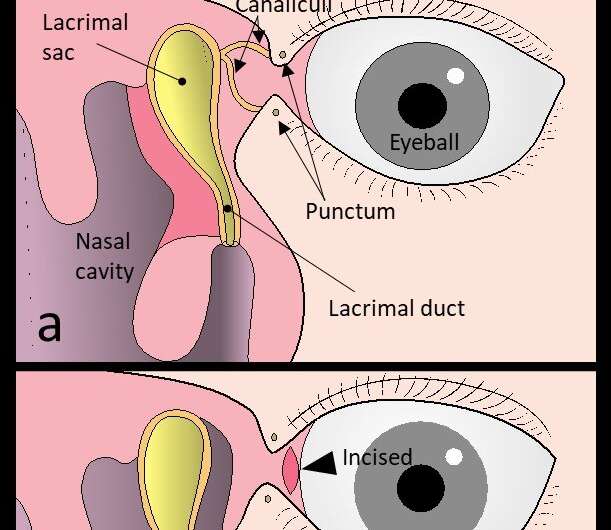bactrim and clindamycin eagle effect

Under normal conditions, tears in the eyes are drained into the lacrimal sac through small openings called the upper and lower puncta located at the inner corner of the eye (called medial canthus). The tears go through small ducts called the superior and inferior canaliculi and then flow through the lacrimal sac and the nasolacrimal duct, and finally into the nose. Obstruction in any part of the above-mentioned passage is the most common cause of watery eyes or epiphora. Epiphora affects the quality of life (QOL) of patients. When both the upper and lower canaliculi are obstructed, the tear fluid cannot be drained into the nose, resulting in epiphora. Although the cause of canalicular obstruction cannot be identified in many cases, cual precio xenical costa rica it is thought to be associated with aging, trauma, tumors, and oral anticancer medication.
A minor surgery to enlarge the canaliculus by inserting a silicone tube is the common treatment to remove the obstructions. When the canaliculus is reoccluded or cannot be kept open, A Jones tube placement is considered, which semi-permanently places a glass tube that directly connects the nasal cavity and medical canthus. Otherwise, a surgery with an external incision may be considered, which leaves a scar of approximately 2 cm on the side of the nose.
To overcome the disadvantages of these conventional surgical methods, a team of otolaryngologists and ophthalmologists at Toho University Sakura Medical Center has developed a new procedure, ‘conjunctivoductivo-dacryocystorhinostomy.’
All surgical procedures are performed under general anesthesia. First, the entire lacrimal duct and lacrimal sac are exposed and elevated, and then the lacrimal duct is cut at the lower end. At the medial canthus, the conjunctiva is incised. The end of the cut lacrimal duct is withdrawn from the conjunctival incision and sutured to form a new lacrimal punctum. Then the medial wall of the lacrimal sac is opened wide. Now, the former lacrimal duct and lacrimal sac become the new lacrimal passage, and the tear fluid flows in this newly made passage.
Source: Read Full Article
